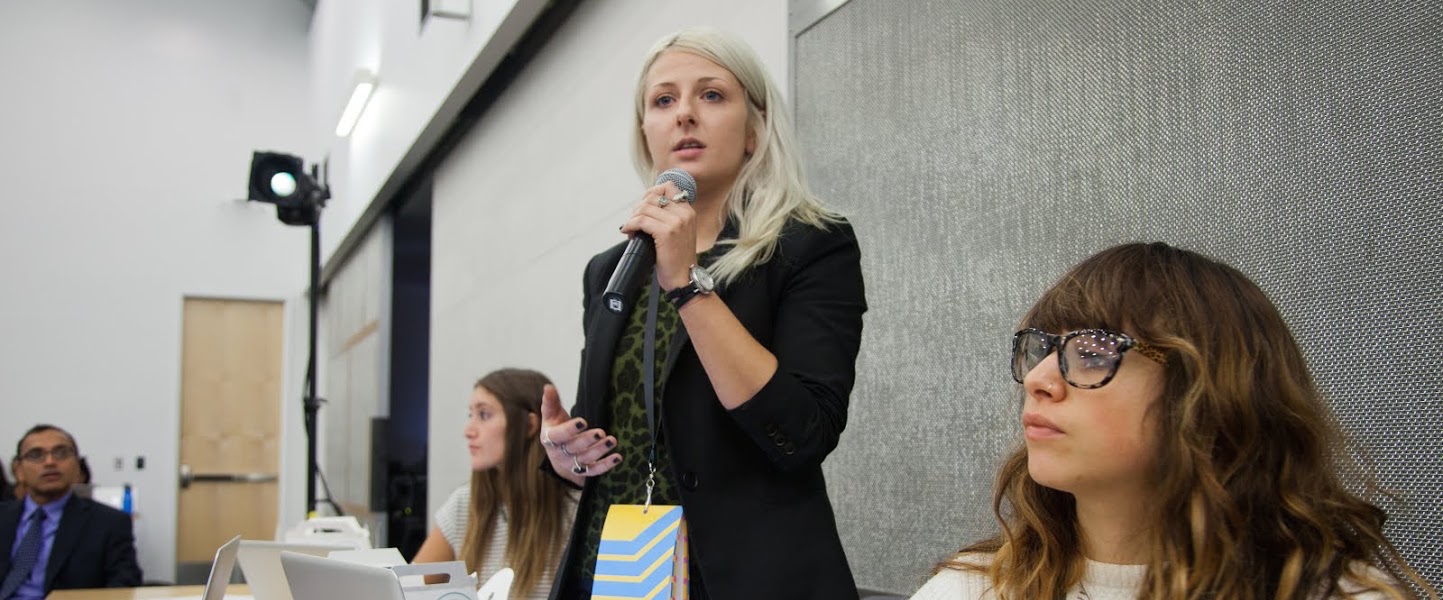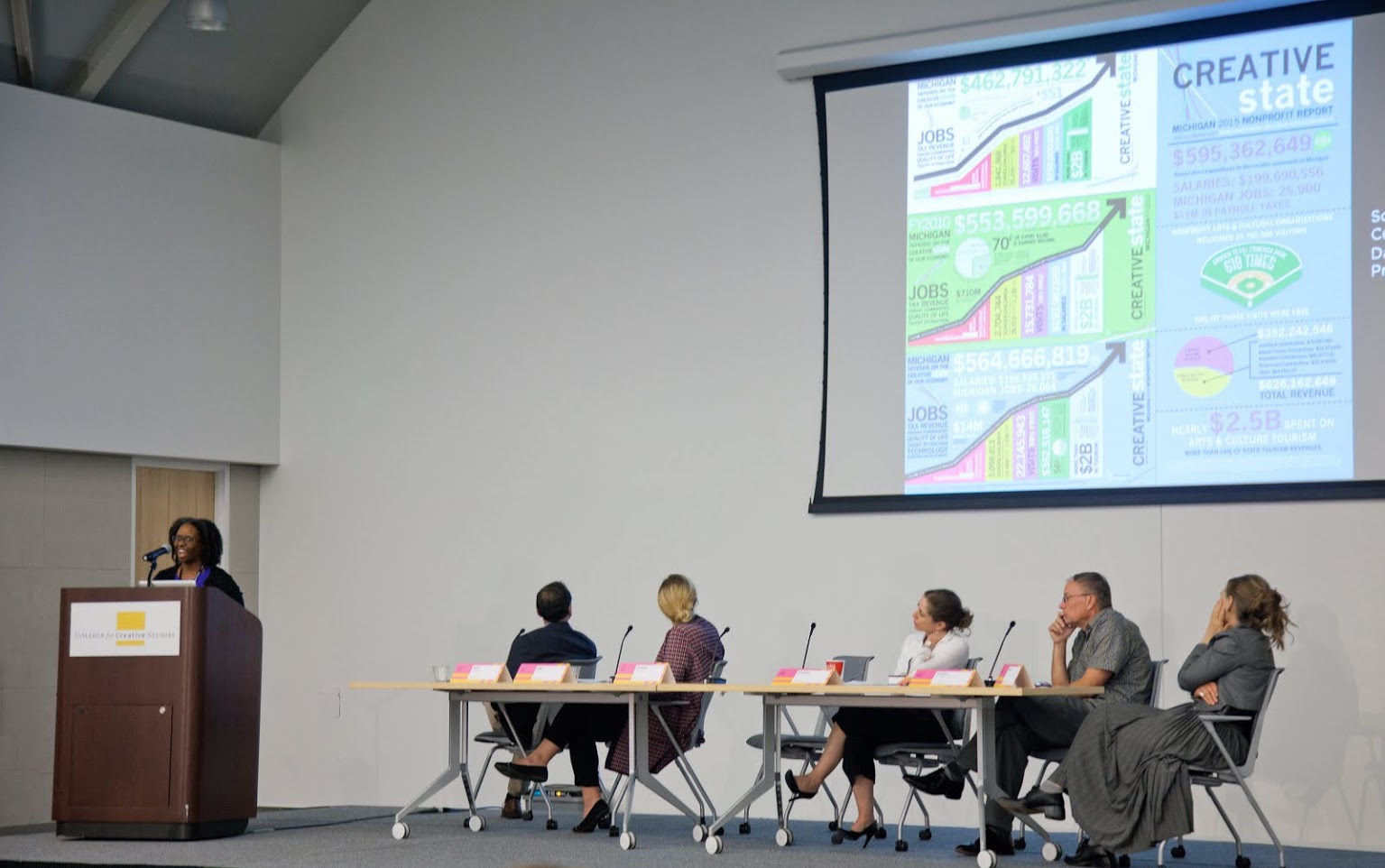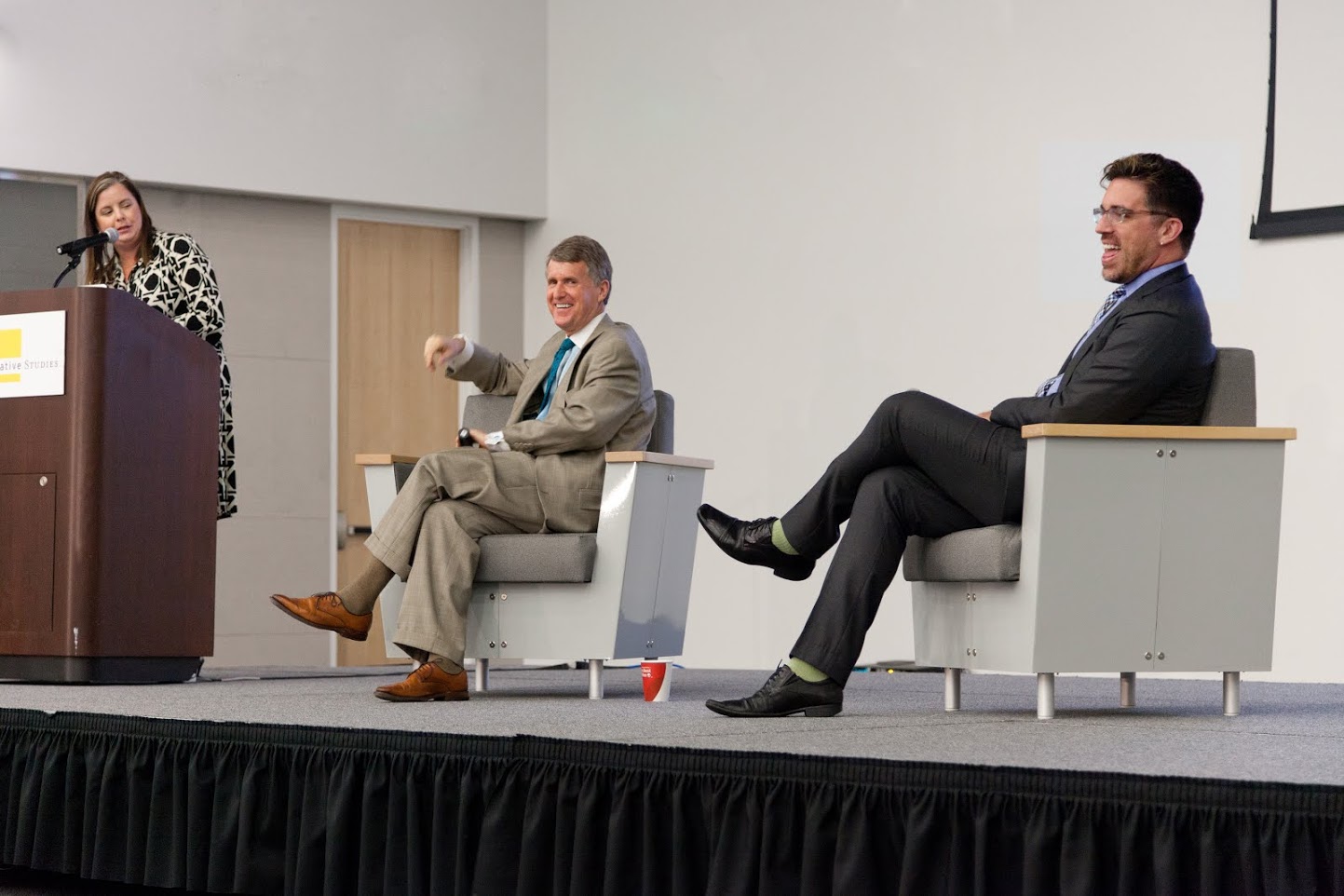
How much is a city’s culture worth? Quantifying the economic impact of the arts in Detroit
Photo: Paulina Petkoski of Playground Detroit at the Creative Economy Policy Summit. It is a tricky and delicate practice to place value on something typically considered as intuitive and personal as art-making. But that is the main concern of the many organizations and speakers that played a part in the Creative Economy Policy Summit: Growth Opportunities for Michigan–a daylong seminar featuring thought leadership in the field of Creative Economics.
The conference, which was organized by Creative Many Michigan and counted Knight Foundation as a supporting sponsor, brought together dozens of the biggest names in Detroit arts infrastructure, including foundation heads, placemakers and local leaders. There were also special guests and panelists from the National Endowment for the Arts, industrial design firms, civic engagement groups and many others.
Helen Kerr of Kerr Smith Designs kicked the day’s activities off with an illuminating presentation on the creative sector—a labor force that includes a host of job titles outside the conventional definition of “artist/creative.” For instance, Kerr reminded the audience that digital media is a rapidly growing field that currently employs more than 29,000 people in Detroit and Ann Arbor, Mich.

Cézanne Charles presenting findings from Creative Many’s “evidence-based approach” to creative economics.
Following that, the Research + Policy for Growth panel, which included Creative Many’s Cézanne Charles, presented findings that indicate how crucial the creative sector is on a national level, despite a longstanding bias against quantifying the fiscal contributions of the creative class. Sunil Iyengar presented new information from the NEA’s Office of Research & Analysis, obtained in conjunction with the U.S. Bureau of Economic Analysis, which shows that the creative sector generates more than four percent of the annual U.S. GDP. Production of arts and cultural goods and services also account for an astonishing 50 percent of all copyrights generated—an investment in intellectual property protection worth $433.5 billion. This shift toward viewing arts and entertainment properties as fixed investments (which tend to appreciate), rather than as expenditures or write-offs, represents a seismic shift in the valuation of not just art objects, but the creative sector as a powerful contributor to the prosperity of cities and the country.
There was also a great deal of attention paid to the role that artists and creative thinkers can play in problem-solving around infrastructure and program design. “Most of the intractable problems in society will never be solved by one sector working alone,” said Dennis Cheek, co-founder and executive director of the National Creativity Network. An address by Michael A. Finney, an economic growth advisor to Michigan’s governor, and a spotlight conversation between Kresge Foundation CEO Rip Rapson and ArtPlace America Executive Director Jamie Bennett, both gave credence to the power of artists to bring radical transformation to spaces. Rapson pointed out that the arts can play a role in the success of something as seemingly unrelated as transportation systems, highlighting the efforts made in the Twin Cities to drive arts engagement along their light rail project. This example, he said, is an effort that “[The Kresge Foundation], as a major funder” should replicate in some way around Detroit’s M1 rail.
This was a powerful meeting of minds, and what was revealed throughout the day was a future full of creative possibilities for Detroit.

From left: Katy Locker, Detroit program director for Knight Foundation, introducing Kresge Foundation CEO Rip Rapson and ArtPlace America Executive Director Jamie Bennett.
Recent Content
-
Artsarticle ·
-
Artsarticle ·
-
Artsarticle ·

